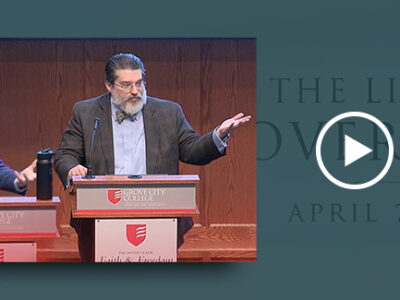Editor’s note: This article first appeared at The American Spectator.
In its last three terms, the Supreme Court has received a great deal of public attention — both positive and negative — due to its decisions on human sexuality (Bostock, Zarda) and abortion (Dobbs). This term, going relatively unnoticed, were two now-decided cases — Sackett v. Environmental Protection Agency and Tyler v. Hennepin County — both dealing with an area of the law that, since World War II, has received relatively little attention: property rights. These two cases mark what appears to be the rejuvenation of interest by the Supreme Court in protecting property owners from governmental overreach.
First, a bit of background. Property rights, as described by James W. Ely Jr. in his short-but-insightful book The Guardian of Every Other Right, suffered a fall from their position of primacy during the colonial period to “relegation … to a lesser constitutional status” today. New Deal legislation, land-use controls by local governments, eminent domain laws, and the growth of the regulatory agencies have chiseled away at the originally high place of property rights.
Thirty years ago, James W. Ely hinted that perhaps the Supreme Court was “poised for a significant revival of interest in property rights.” He was right to have reservations about that happening soon. These two new decisions, however, may be a foray intended to begin to restore property rights.
Sackett Cracks Down on the EPA’s Imperialism
Sackett v. EPA is the most significant of the two cases. It concerned a tenacious Idaho couple who engaged in what they thought was the innocuous act of back filling the wet area of a lot they owned in order to prepare it for building. The 15-year-long saga began in 2007, when the EPA first notified the Sacketts that they were violating the federal Clean Water Act (CWA). The two were understandably perplexed because the wet area they filled, at best, fed into a small non-navigable ditch that then led to Priest Lake, 300 feet away.
What the Sacketts encountered over the next decade and a half was a nightmare. They were first confronted with the CWA’s confusing language. What “waters” were to be protected from pollution when the act vaguely referred to “waters of the United States,” and did that actually include the damp spot on their property? And what were pollutants? Normally substances like fertilizers, pesticides, and fecal waste would come to mind. Instead, pollutants, the Sacketts found out, were defined broadly to include even dirt and rocks ordinarily used for fill.
Second, the consequences that awaited the Sacketts were, as former Justice Anthony Kennedy described, “crushing” — “even for inadvertent violations” of the CWA. In their case, for example, the Sacketts were threatened with penalties that would run to $40,000 per day. And, finally, their case was initially placed in the hands of two governmental agencies that had a history of what Justice Samuel Alito courteously called an “expansive view of the CWA’s coverage”: the EPA and the U.S. Army Corps of Engineers.
Fortunately for the Sacketts, Alito’s opinion of the court, joined by Justices John Roberts, Clarence Thomas, Neil Gorsuch, and Amy Coney Barrett, found in their favor. Alito painstakingly outlined earlier cases where the court repeatedly questioned the expanding regulatory reach of the EPA and the Army Corps and yet reluctantly deferred to them.
Eventually, Alito described, in 2006 — in the most recent case concerning CWA jurisdiction (Rapanos v. United States) — the court again observed that the sweeping agency decisions combined with lower federal court rulings had increased the jurisdiction claimed by the EPA to “cover 270-to-300 million acres” of wetlands and “virtually any parcel of land containing a channel or conduit … through which rainwater or drainage may occasionally or intermittently flow.” However, the members of that court who saw federal overreach could not muster support for anything more than a “plurality” opinion — one that receives the largest number of votes but is still short of a majority. As plurality opinion is not binding, the extent of the reach of the CWA remained in doubt.
In Sackett, a new majority emerged due to the changed makeup of the court, and that majority was able to provide much needed clarity about the meaning of “waters of the United States” in the context of the CWA. Though those five words have led to decades of confusion, they have to be the starting point.
The majority opinion relied on the common dictionary definition of “waters.” When the CWA talks about “waters,” said the court, it means plainly and simply “only those relatively permanent, standing or continuously flowing bodies of water … described in ordinary parlance as ‘streams, oceans, rivers and lakes.’”
Obviously, not all appearances of water, like puddles or isolated ponds, fit this description. Where did that leave the “wetlands” on the Sacketts’ property? The EPA doggedly argued that these and other like areas are covered by the CWA without exception. The court rejected that claim, pointing out that if that stance was adopted, the EPA would be authorized to regulate vast land areas “greater than the combined surface areas of California and Texas.”
Instead, the court said that only those wetlands that are “indistinguishable” from “waters of the United States” can be policed by federal agencies. Said another way, the only wetlands that are covered by the CWA are those that have a “continuous surface connection to bodies that are ‘waters of the United States’ in their own right.” Thus the “wetlands” on the Sacketts’ property, which have no continuous connection to Priest Lake, cannot be regarded as “waters of the United States.” The property is not within the EPA’s jurisdictional grasp.
The opinion is a victory for common sense, plain meaning, and the property rights of landowners. It is a strong rebuff to the avariciousness of the EPA bent on advancing its ecological “imperialism.”
Tyler Leans on the Magna Carta
The facts of the second case, Tyler v. Hennepin County, are straightforward. Geraldine Tyler bought a one-bedroom condo in Minneapolis in 1999. After living there for almost a decade, she and her family decided to move her into a safer location in a senior community.
For reasons that are unclear, no one thought about paying the local property taxes on the then-vacated condo. By 2015, the unpaid tax bill added up to $2,300, but, with interest and penalty charges, the total was a considerable $13,000. Henepin County sold the condo at a tax sale for $40,000.
Under Minnesota law, the county was allowed to retain the $25,000 excess for its own use, and it did so. Tyler brought suit claiming that the county’s retention of that excess was “taking of property without just compensation” under the Fifth Amendment, as applied to the states through the 14th Amendment. Her case found its way through the lower courts to the Supreme Court.
Roberts, writing for a unanimous court, agreed with Tyler. The opinion called attention to that ancient document of liberty, the Magna Carta, according to which officials collecting debts owed to the Crown, once the debt was fully paid, must return the overage to the debtor. That same rule found its way into American colonial law and became the majority rule in the United States. Thirty-six states and the federal government require that any surplus that remains after full payment of a debt to the government must be returned to the debtor. Minnesota should not be allowed to be an exception.
Moreover, the court noted that Minnesota law is internally inconsistent in that it allows other tax debtors (owing income taxes or other personal taxes) to receive a refund when an excess remains. Only real property owners face disparate treatment when overage remains.
The end result? Tyler is due a refund. Minnesota cannot refuse to make such a repayment without violating the principle of just compensation. Undoubtedly, the states in the minority will be reviewing their procedures as a result of Tyler.
Is the court reestablishing a proper respect for property rights? Only time will tell, but these two cases are a good start.




